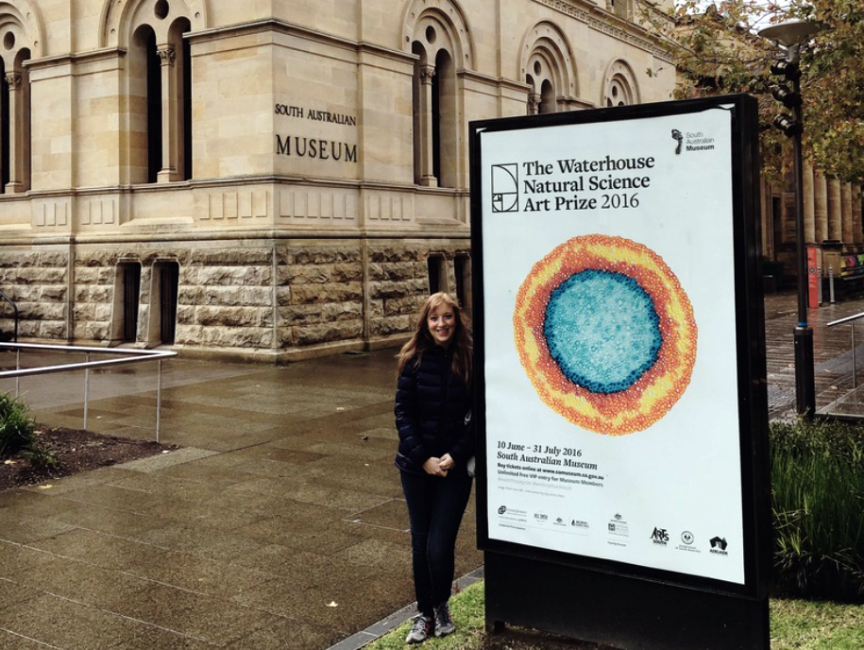Name: Joy Levins
Which came first in your life, the science or the art?
The art came first. When I was seven years old, I fondly remember a teacher remarking to my mother that I would be an artist. I was always interested in constructing things from an early age and wanted to be a carpenter/builder like my father.
As a young adult I initially wanted to work with plastics and was very interested in transparency. Specifically, I observed how light refracted through clear objects, but then discovered glass and decided to take that further. During my degree in Architectural Glass I discovered the science and was intrigued by looking at microscopic images of glass fractures.
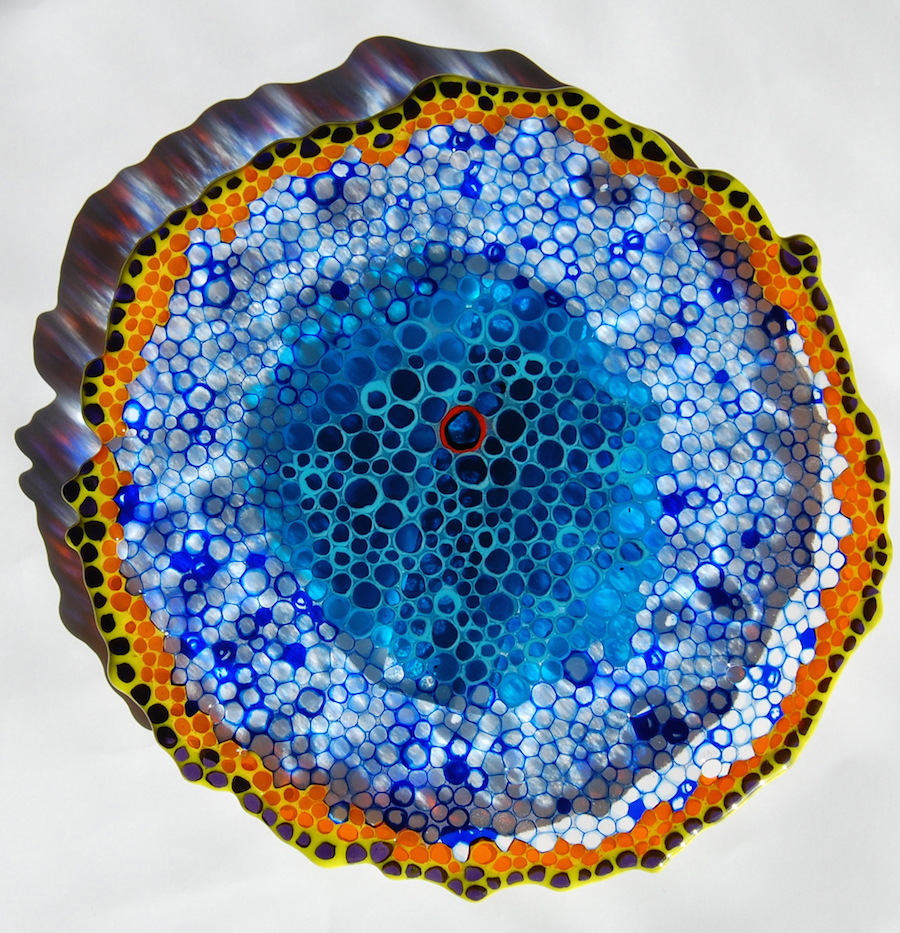
Blue Cell
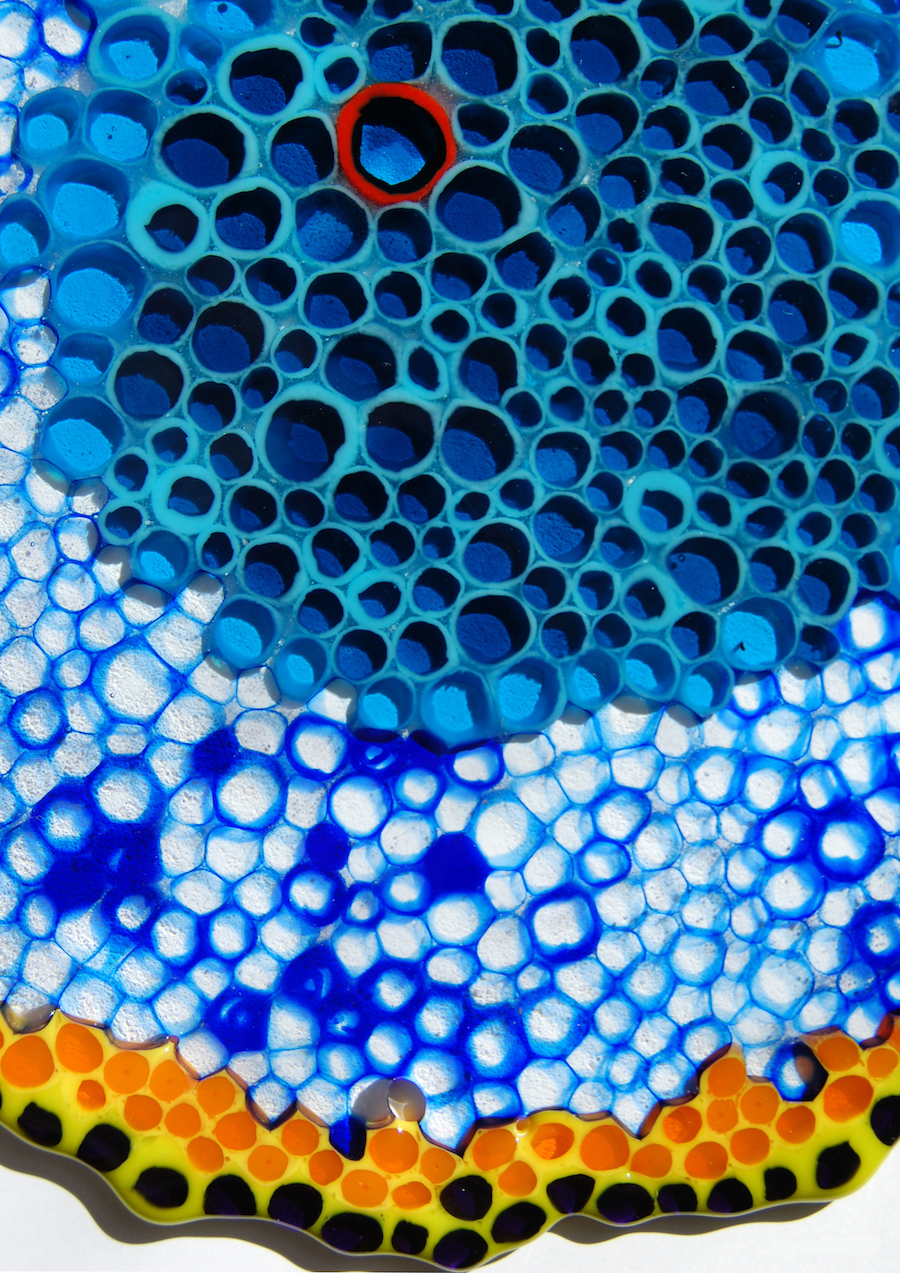
Blue Cell Close Up
Which sciences relate to your art practice?
Biology, neuroscience, electron microscope imaging, and all kinds of imagery related to the cell and stem cell are used in my artistic practice.
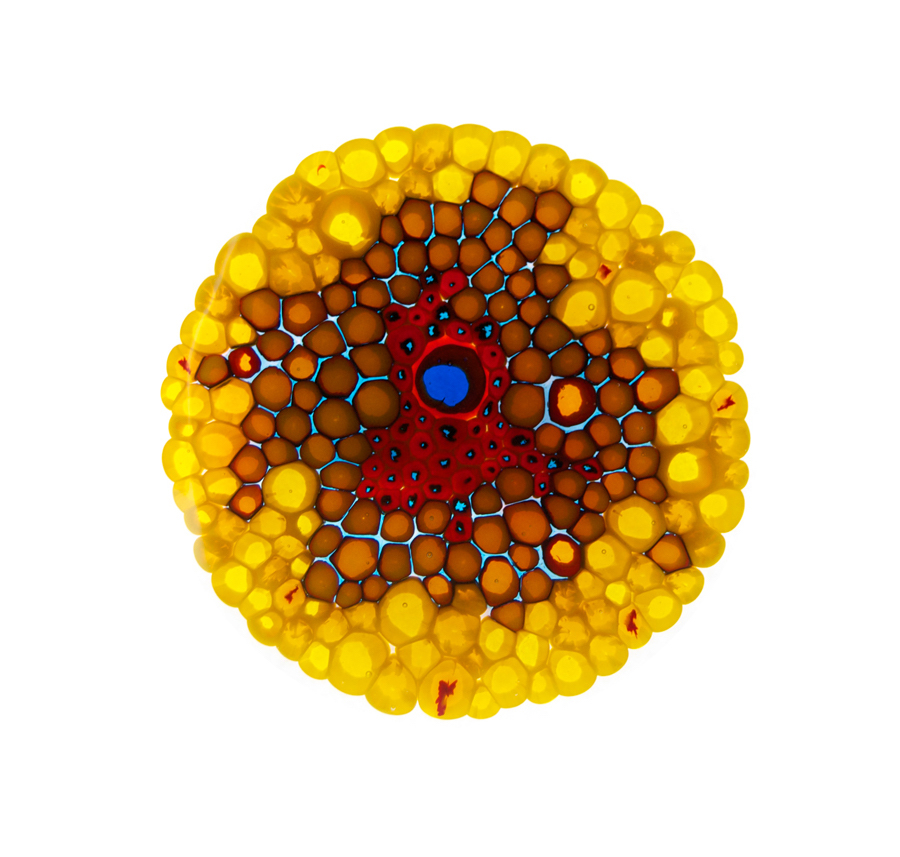
Yellow Cell Lightbox
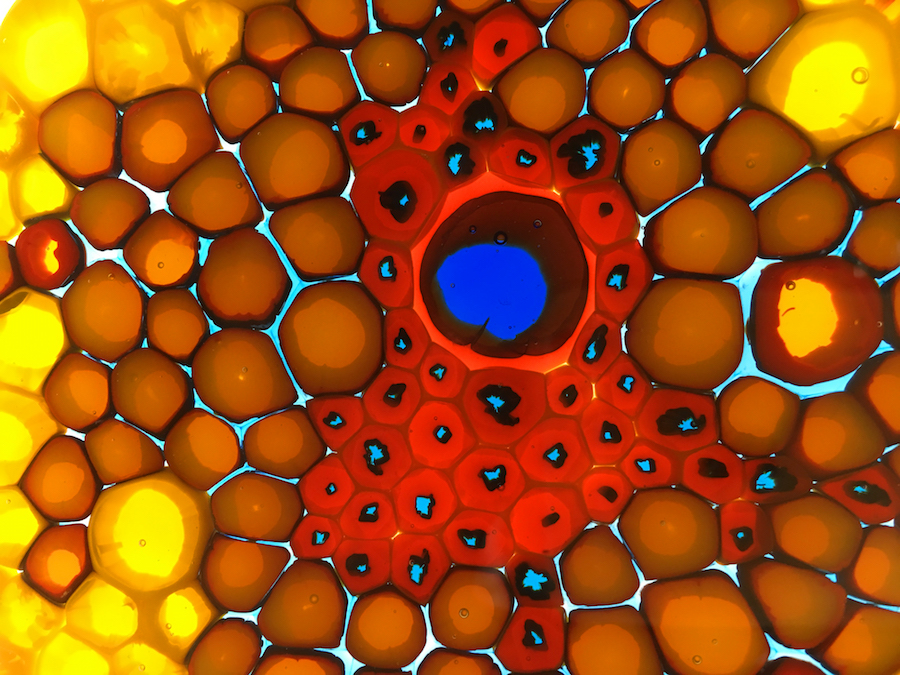
Yellow Cell Lightbox Close Up
What materials do you use to create your artworks?
Glass – I produce my own murrine cane using the vitrigraph technique. I use a murrine chopper and kiln form all of my pieces.
Artwork/Exhibition you are most proud of:
The Waterhouse Natural Science Art Prize 2016. I really wanted to be selected for this exhibition and felt (in jest) that if they don’t get my artistic practice, then nobody will! Upon arriving in Adelaide, Australia in early 2012 from Ireland, the exhibition was one of the first shows I resonated with and so, it was a wonderful confidence boost to be selected. An image of my piece was used as advertising all over the city during the show. I really couldn’t have asked for better exposure, plus the piece sold on opening night, so I took that as a launch pad and it gave me conviction in what I was doing.
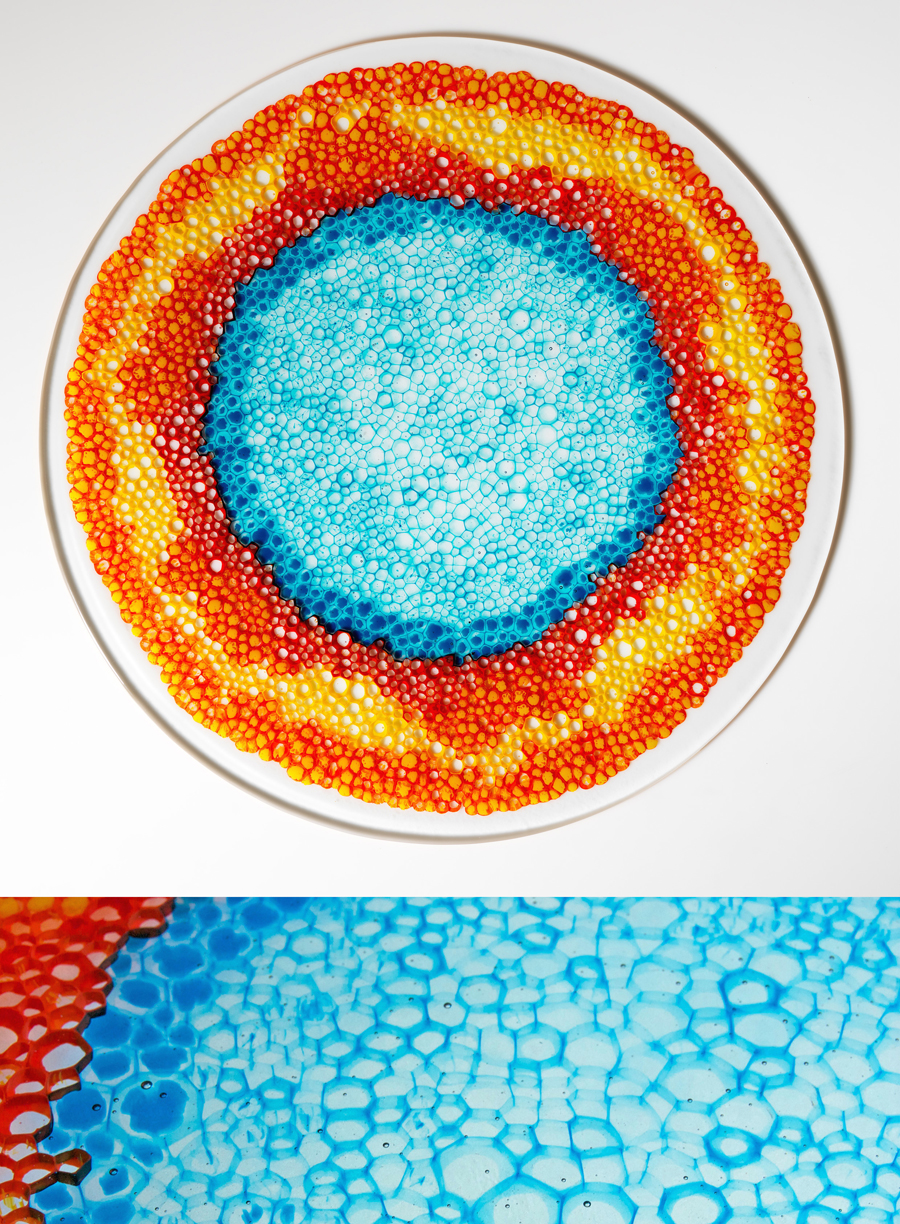
The Waterhouse Natural Science Art Prize 2016 – Plant Stem Cell Cross Section
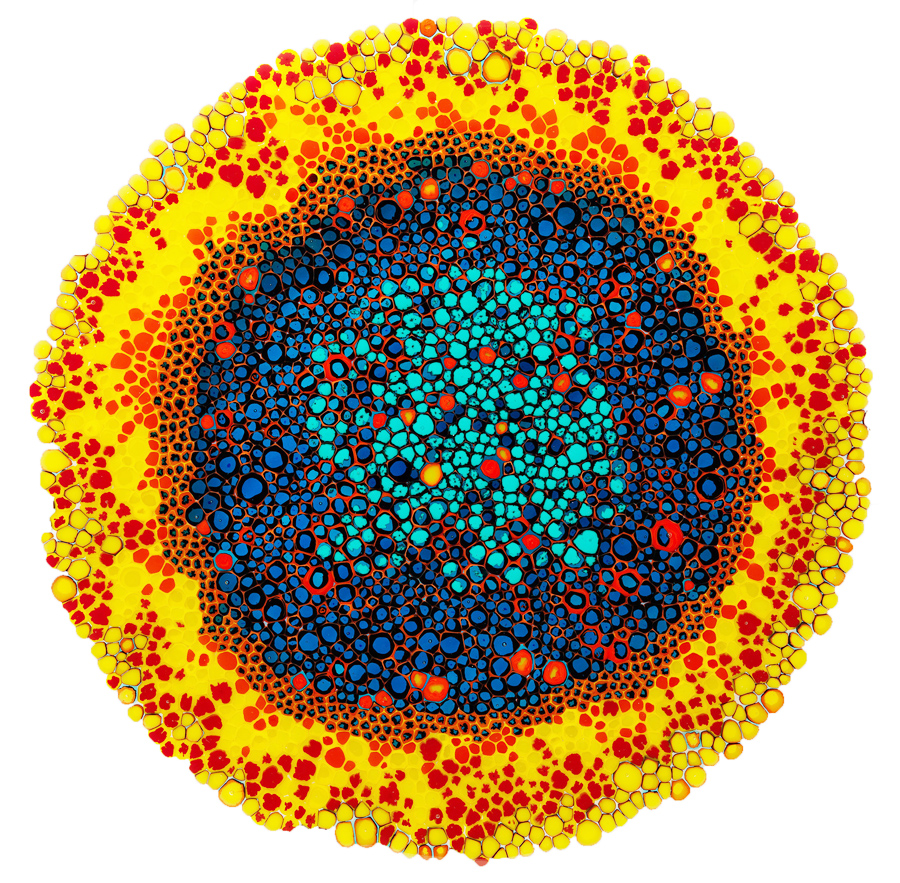
Wall Piece
Which scientists and/or artists inspire and/or have influenced you?
I was very fortunate to be selected as Artist in Residence at SAHMRI in the Nutrition and Metabolism Department as part of the SALA Festival in 2016. It was an amazing experience to work closely with the scientists and researchers, to work directly with the creators of these images that I had previously had to download online. All my questions and queries answered and at my fingertips. It was nothing like I had ever experienced before. A true SciArt relationship. They were all fantastic.
I love Pop Art and collect kitsch. While I don’t see my work having any kitsch references, I do try to allow the colours to pop a bit, so aesthetically they are pleasing to the viewer without necessarily needing any prior knowledge in science; to draw you in to question it.
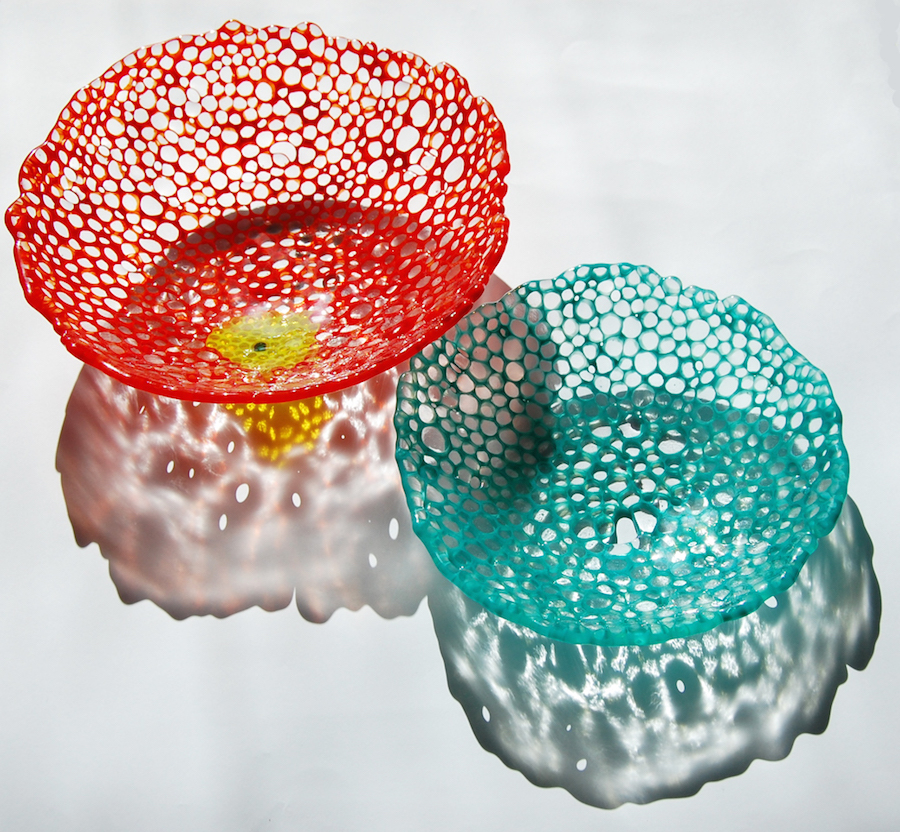
Cell Bowls
Links: AdalaidNow, Tumblr
Share this Post

